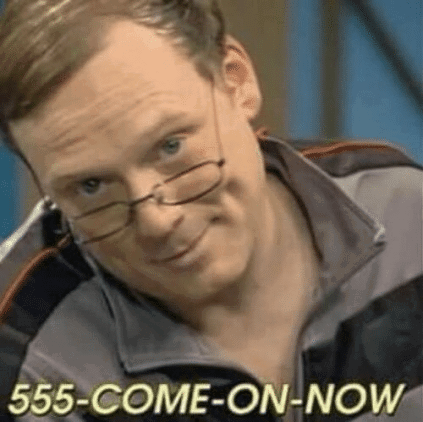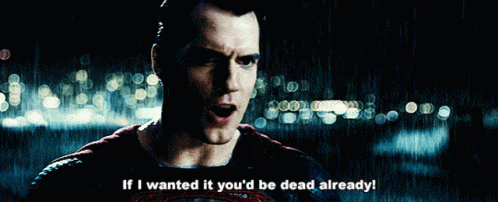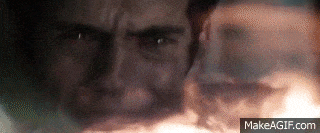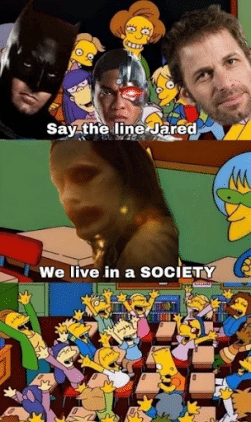Anyone could easily give Justice League praise for its fixed sense of purpose, exceptional technical prowess, and consistency of tone. You could more easily condemn it for the same reasons.
I’m going to be honest here — it’s a somewhat decent DCEU movie when compared to other DCEU movies. That’s not a very high bar. I want to be civil and say it is below average, but I can’t because it is far worse. Even a good superhero flick (and this definitely is not by a LONG SHOT) shouldn’t be this long. I want everyone to know that Godfather Part II, widely considered a cinematic masterpiece, has a runtime of only 3hr 22min. It’s more like #ReleaseTheDeletedScenes with so much padding everyone involved from viewing and creating this movie should have their own armory. With the addition of a populist fervor calling this movie one of the all-time greats, auteur cinema (including with hot dog fetishes), or whatever hyperbolic reaction to this movie. It really shows that there is a manufactured mindset about this movie looking from the outside. There is so much content with that populist fervor that is near anti-intellectual.
The majority of these popular positive content distributors/creators of the movie have lost their ability to put their emotional experience in perspective. It’s basically undercover narcissism when you get down to it. That narcissism breeds thoughts like, “I/All of us will make everyone see reason. This isn’t just about the movie, it’s much more than that.” When your content reaches these levels in any medium, please for all that is holy stop and understand these two lines:
Fandom = Good.
Fandom as Cult = Bad.
This movie doesn’t really care about the story, which explains why Zack Snyder’s Justice League is a four-hour tale about a guy looking for a glowing Lite-Brite Rubik’s cube. The majority of the action, even when it doesn’t involve The Flash, unfolds in wildly overindulged super-slow motion. The movie is filled with many scenes that drive the viewer to be in catatonic states of wonder and awe. The action still chains generic mayhem to generic mayhem, be it on land, underwater, on the magical isle of Themyscira, and inside a radioactive Soviet-era power plant.
I couldn’t help to bust out laughing in the intro Aquaman scene. It’s an utmost Zack Snyder moment: hardcore, sentimental, worshipful of abs, it’s literally borders homoeroticism. But this is the guy who oiled up 300 dudes in speedos and tight knee-high boots. He’s an equal opportunity objectifier and you gotta sell to make the dough. Shout outs to Aquaman’s bod essence as it prepares you for a turbo-hyper version of the director’s trademark vision.
Snyder had an enormous budget of around $70 million to finalize this “vision.” The new specials effects are not substantially better, and there are a lot of them applied throughout the movie. The main villain remains Steppenwolf, a boring creature with a lack of motivation doing the fetch-quest plot stuff. His character is essentially “Darkseid senpai please notice me.” Steppenwolf gets a glow-up; imagine thinking the problem was his clothes! His new armor is comprised of countless moving sharp points. At first, I thought he looked like a walking metal pin art toy getting tickled by the invisible clicker from point-and-click adventure games. Three hours later I realized: They made this guy into a bloody porcupine! Too much of the movie still focuses on the Mother Boxes, wonderful comic book creations reduced to glowing cubes. The Atlanteans still speak to each other inside air bubbles. The aquatic scenes are still murky, gray, and sometimes devoid of color. All the other scenes have been made murkier and grayer. I naturally thought that the goofy clown-like effects were a cost-saving measure for reshoots. How awful to discover it was a stylistic choice.
Cyborg has a longer origin story (certainly not as long as his issues with Warner Media treating him and kinda sweeping it under the rug), but his CGI body looks like an amalgamation of scraps from The Lawnmower Man film. Cyborg explores a greenscreen-like virtual world that came out of someone’s first YouTube or Tik Tok parody clip. His father explains how he can access the entire digital universe, including the world’s monetary systems and its complex interactions, aka global capitalism. When he hears this, Cyborg sees a huge virtual bull engrossed in a battle with a huge virtual bear. If anybody out is wondering, yes, this is how the economy works.
I want to make this VERY clear. Ray Fisher is a good actor. Hell, he has the potential to be one of the all-time greats. This whole romanticizing of how great he is in this movie makes my blood boil as a Black man. Where was this support for him when talking about the abuse he received during his time at Warner Media? As soon as he becomes an “inconvenience,” he is no longer safe from accusations/blacklisting, etc. Am I hopeful for him to reprise the role of Victor Stone? Not really. But hey, “fans” got the movie out of it and that seems to be a larger imperative to some more than others.
Clearly, Cyborg is not edgy has joined the revolution Comrades.
This is not the Ben Affleck I expected to see. I can’t believe anyone thought this is what Batman should be doing. In one scene the camera gently pans to the Mercedes-Benz logo in Bruce Wayne’s car, and three minutes later, the camera pans again across the Mercedes-Benz logo on Wonder Woman’s car. We see Batman get off a private helicopter to board a private jet, so now we know this man is going somewhere. The majority of time in this movie he’s talking about Mother Boxes, staring angrily at screens, groaning while his Batmobile fires chain guns at sky-goblins, and dropping the occasional quip/meme.
Remember towards the end of the movie and he’s talking to the Jared Leto redemption scene and he curses? For those of you who have seen this scene or this is their first time hearing this, does that sit well now that you are pausing and thinking something along the lines, “wait did Batman curse?” That stinging thought that came in your head cognitive dissonance. Anybody worth their salt knows the basics of Batman’s character. He doesn’t kill (directly there are some times where he’s left a homie hanging), he’s a loner, no guns (though using guns on inanimate objects is okay, but using it on aliens could be crossing the line), he’s vengeance, he’s the night, he is Batman. If someone asks, “Do you think a character like Batman cursing is bad?” A simple response is it’s in Batman’s nature not to curse. Period. He doesn’t have to. He’s Batman. Here’s an upgrade to that simple response. He’s a disciplined character. He’s Batman. He’s straightforward and unyielding. Swearing would be useless consonants getting in his way of crusade against crime. The only time he could ever be seen cursing would be when he’s undercover. The amount of pain Bruce has taken over the years from his gallery of rogues and rarely a curse came out of his mouth is extraordinary. Batman has so much discipline that in Batman Beyond (great series must watch for anybody) he used a gun ONCE to save his own life out of self-defense, and he decided after that night to NEVER DON THE BAT SUIT AGAIN. His discipline and internal morals from the trauma of losing his parents from gun violence is stronger than his needs of survival. Here’s a quip from the movie: when Alfred warns his master that reviving Superman is like waving the proverbial red cape at a bull, Bruce growls, “This red cape charges back!”
The other leads seem to be waiting for their own superior more colorful solo movies.
Let’s consider how the Wonder Woman scene where she learns about the invading alien army. If common sense was involved and not senseless padding of screen time, she would have looked out a window and, like, noticed an invading alien army. “Great Hera!” she might say, costumed for battle by the next scene. In this rendition of the movie, Steppenwolf attacks her mother, Hippolyta, and steals the Amazons’ Mother Box. Hippolyta announces it is time to light the signal fires. She gets the Arrow of Artemis out of its coffin-shaped box, sets it aflame, mumbles a ritualistic incantation, and shoots the arrow skyward. It soars through the air to another island and lands in a temple. The fire burns mystically for hours and Wonder Woman sees it on television. She sneaks into the temple, grabs the arrow, descends into a cave, and finds a door with an arrow-shaped hole. Behind that door: A room full of ancient runes and spooky images. Then Wonder Woman tells Batman there are aliens invading. Batman already sort of knew that. Aside from Wonder Woman and the Amazons in this part of the movie, the female characters here are mostly mopey and have little purpose beyond supporting the men. There’s a scene later in the film where Wonder Woman is learning to make tea with Alfred? If you can’t tell, this isn’t it chief and it is very VERY cringe.
I spoke with someone who also saw the Snyder Cut and they gave me a big brain moment about the Justice League plot: “That also reminds me of my issue with Superman in this iteration. This entire universe is more or less hinging on the team and the world’s love for Superman. I still think his death was the most unearned moment I’ve seen in a movie in a long time. I never cared enough about this version of the character for his death to have any weight. And having that be a major force head does fall very flat as a result.”
As you can see Snyder has character development/motifs down-pat boys.
In a flashback to an ancient battle, we see a Green Lantern. He got his classic power ring that can create any weapon: A gigantic hammer, boxing gloves as big as trucks, a row of emerald catapults, quaking mountains full of falling rocks. Seriously, imagine anything at all. In the great vision of Snyder, Green Lantern holds up his ring… and fires green energy.
He’s shooting up Darkseid, the despot of Jack Kirby’s Fourth World mythology. Kirby’s rendition of Darkseid was powers-of-ten more hyperbolic than Snyder, every page full of exclamation points, an unstoppable god monster. Here, Darkseid is a generic see-you-next-sequel baddie, so obviously a wannabe Thanos that it no longer matters Kirby invented Darkseid first.
Everything in this movie moves with that impeccable busy pacing of action figures supplanted to a slow-moving conveyor belt moved by the grinding of time and the patience of the viewer. For most of the movie, there are five Justice League teammates, but there’s only one kind of conversation. Batman, Wonder Woman, and Cyborg explain things. Aquaman asks for clarification. Flash says something funny-adjacent. Rather, Rinse, & Repeat. When Flash delivers the laugh line, “So! We finally have a plan!” sometime around the 25th hour, it sounds extremely desperate and philistine. Reminder, this movie is FOUR HOURS so a majority of the conversation a lot sounds like pure Ezra Miller stand-up comedy. It is not a good stand-up comedy act.
The majority of the different corners of this universe don’t feel, or in a lot of cases look, different. Gotham City resembles Metropolis, which resembles Central City, which resembles London. At night, they are all as shadowy as the Fake Chernobyl where Steppenwolf sets up shop. Snyder isn’t reinventing the wheel here. He wants everything to be cool, and he one of the things he thinks the coolest thing Batman can do is blow up an alien zombie head with an energy rifle. This boom-bang instinct is certainly stylish. Let’s make this clear: style is not substance and they’re not interchangeable. In the medium of film, one can separate style and substance. The production design, the cinematography, the acting, the editing, the music, and the sound mixing, all of that is film. Style is one of the meanings based on how well a film tells the story. Style in and of itself is not the end-all-be-all of the conversation. It’s just the easiest one to point out and links other aspects of the movie together to create the experience. Hey, not everything needs to be a formulaic Marvel dramedy with self-aware banter and third-act feels. But Zack Snyder’s Justice League spends too much time setting its spinoff table, Easter eggs, & cameos rather than creating substance for the movie.
The lack of substance in this movie comes from a distinct problem that the film feels like it is ashamed of itself of being a Superhero movie and uses stylish violence to reassure itself “I’m cool guys.” If we go back in time to Snyder’s first superhero movie Watchmen and the comic book it’s based on, the way violence is portrayed in that book is that there is no giant panel and the violence is blunt, messy, and somehow ordinary. The reason why it was done this way was to show the heroes in this story are not to be glorified in any way. Secondly, it shows that the violence is not indulgent in any way. In essence, Watchmen is an anti-superhero movie.
In Snyder’s Watchmen movie he portrays the violence (though Snyder has made a lot of scenes and shots similar to the comic) the complete opposite from the book. The violence has slow motion, lots of badass striking attacks, dark lighting, it’s cool superhero poses…. wait doesn’t this sound familiar? One of the core themes of Watchmen the book is that superheroes are losers and they fight crime to make their sad existence meaningful. In Snyder’s Watchman, he’s saying the same thing but hey kicking bad guys’ asses is awesome. Doesn’t that dissonance feel contradictory? Ozymandias was willing to create a monster to destroy the world to create “world peace.” Is the violence he curtails badass? It’s as if the movie does not want to be a film that critiques American Corruption and Patriotism, Identity and Empowerment, or my personal favorite, Moralist vs. Utilitarian Ethics. This is not a point trying to say “violence bad, compromise good”— it shows there is a difference between Superman punching a Nazi, and Superman killing Zod. That difference being Superman killing Zod only shows that Superman is powerful and brutal while Superman punching a Nazi shows he’s a hero and defender of the just.
It makes the power fantasy that is at the heart of many Superheroes stories more dark and sadistic. Seeing the brutal violence just being violence for violence reminds me of how teenagers think what being an adult is like. It’s super try hard to be serious and the same be time be a licensed property that has a legacy that spans several decades.
Let’s take a look at the Wonder Woman vs the terrorist scene as she lays waste to the terrorists around, they crash into walls and leave large blood splatters, and when she takes on the leader of the group, it’s heavily implied she effectively melts him with her bracelets. She causes the usual wanton destruction to rain a ton of rubble down on the police waiting outside, which probably caused at least a couple of injuries. Instead of just beating the terrorist and arresting/detaining like a Basic Superhero 101 stuff — this lambasted violence is just silly.
One might retort with “Hey it’s a Rated R Movie.” So? Does that rating add more value to the movie? If that is the case then people can not enjoy cinema-like Pixar’s UP which rated for younger audiences because it lacks the R? Snyder said, “Let’s not use any second-guessing. Let’s just do it the way we think is the coolest. That was the philosophical approach. I always feel that the consequence is important to me, that there are real stakes.” Snyder’s commitment to portraying superheroes as careless murderers is sure to remain undisputed. Being a hero at its core is being idolized and looked up to for what you say and your actions. Who in this movie is a hero, if the majority of their actions have consequences and they sacrificed their integrity to defeat the basic low-level villains? Don’t think about it those baddies got seriously pwned.
Roger Langridge once said, “I think it’s insane that DC has spent 70 years making Superman as big as Mickey Mouse, and branding him to be understood by parents as being pretty much as kid-friendly as Mickey Mouse, only to piss that brand away in a decade. Nothing wrong with doing mature content… in fact, it should be encouraged as often as possible but doing it with characters who are on your kids’ lunchboxes is kind of moronic.”
As harsh as this sounds Roger Langrigde has a solid point when comes to uses characters that have an extended legacy in media outside of films. The idea according to Roger Landgridge is “Take a lesson from Watchmen and come up with new characters for that stuff. And then go back to Superman and Batman and put the same kind of love and effort and craft and intelligence you’ve been putting into all of those rape scenes and body mutilations into something kids… and adults can be proud… of all the love and effort and craft and intelligence you’ve put into it, and make those the ‘real’ versions.” Roger Landgridge sums it up perfectly. TV shows like The Boys, or movies Dredd are perfectly fine because properties were created with the intent of using violence in a gritty and dark setting. It’s a bad idea as Roger Landgridge stated to use IPs of characters in two different settings at the same time. For example, Robin in Titans and Robin in Teen Titans Go. Robin in Titans is a hyper gritty and violent character in bright-colored spandex compared to Robin in Teen Titans Go he’s a childish meme. Who is the real Robin?
This cut is in a square aspect ratio, a visual leap from the widescreen theatrical edition. The IMAX-friendly frame allows for greater vertical exploration. There are nifty shots when nobody is talking. But Snyder often loses interest in dialogue scenes. You never feel like these characters are getting to know each other. They disagree, and then they agree, and then they walk everywhere together in slow-motion.
Would I feel differently about the Snyder Cut if it had been released as a six- or seven-part limited series on HBO Max — WandaVision style? Maybe. As is, the movie’s un-panoramic 4:3 aspect ratio framing suits both the IMAX theatrical experience and just about any home screen. The boxy framing does focus our attention on the characters we’re supposed to care about and, intermittently, depends if the viewer is still engaged. The multiple epilogues in the movie felt slapdash and completely random. I can’t imagine a script where they’d be laid out that way. Most of it should’ve been left out.
The movie seems to want more of everything except the quality that it most needs, and the quality that it seems to only comprehend is its style. I keep calling this a movie, but I guess it’s more of a streaming miniseries, complete with chapters. Yet even compared to the behemoth of Marvel-Netflix dramas, Zack Snyder’s Justice League is a chore. At the end of the rainbow, viewers are left with the promise that potentially cool things will happen next time (which is totally not a new hashtag campaign, or is it?). “So begins the end,” Steppenwolf declares. When he says that, there is one hour left in the movie.
Snyder, next time you decide to work on another superhero movie or an intellectual property that is not yours here’s some words of advice from Noam Chomsky: “We shouldn’t be looking for heroes, we should be looking for good ideas.”













